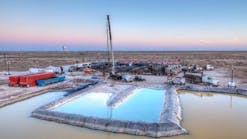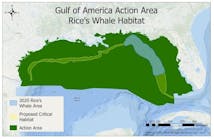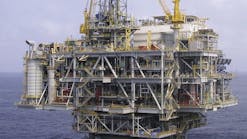Viqar-un-Nisa Quadri, S.M.J.G. QuadriTechnology is definitely the savior of the born again petroleum panorama. On the international horizon are visible the success of 3D seismic, the advent of 4D seismic, and horizontal/multilateral drilling.
International Consultants Riyadh
Quantitative numerical models for integrating known geological, geophysical, and geochemical processes, including 3D basin simulation and visualization, are important innovations that are helping to reduce the cost of exploration.
New international plays include subsalt exploration in the Gulf of Mexico, which made headlines in the early 1990s. Behaving oil prices and the growing importance of gas have played a big part in sustained investment internationally.
It is unfortunate that against this background, in Pakistan there still exist some unventured sedimentary ba- sins and untested plays (Fig. 1 [150,047 bytes]).
This article discusses in some detail one of the unventured regions, the Peshawar basin, and an untested play area, the Punjab platform zone.
Peshawar basin
The intermontane Peshawar basin lies immediately north of Potwar-Kohat basin, the latter the site of several oilfields, 1 with most of the Cenozoic-Mesozoic sequence identical (Fig. 2 [189,853 bytes]). It is bounded in the south by the Hill Ranges and to the north by Southern Kohistan suture zone, the latter dominated by crystalline metamorphic and intrusive rocks.The Hill Ranges comprise of a pair of low, interrupted mountain chains. Faults in the southerly range bring up strongly deformed Jurassic, Cretaceous, and Tertiary rocks, while Precambrian and Paleozoic rocks are exposed along the northern range. Coeval Paleozoic and Mesozoic formations are easily correlated from the Potwar plateau across the Hill Ranges to Hazara.
Eocene formations similar to Kala Chitta and Margala Hills have been found in deep wells drilled in Potwar basin.2 While Silurian-Devonian sediments are missing over rest of Pakistan, in the Peshawar basin at Nowshera, limestones yield Silurian and Devonian fossils.3-4 The thick carbonates of the Nowshera formation of early Devonian age have been described and interpreted in terms of reefal build up by various authors.5
East of the main development of limestone at Nowshera is a series of hillocks: outliers of interfingering quartzites and limestones lithologically similar and in fact more or less on strike with the main outlier at Nowshera.
The Permo-Carboniferous may be represented by the Khyber limestone, which rests on Devonian near the Khyber Pass.6 In the geological literature can be found description of reefs of Middle Paleozoic and Permian ages within the limits of the southern part of Hazara mountains in the northern boundary of the Peshawar basin. The Permian reefs are confined to the northern border of sub-latitudinal Permian paleotrough, where sedimentation is comprised mainly of carbonates. Considering the lithology and presence of corals in Permian limestone of Salt Range, a zone of Permian barrier reefs can be expected on the southern flank of this paleotrough.7 Thus Devonian and Permian reefs can form valid plays under proper sealing mechanisms in the Peshawar basin. Some well defined anticlinal structures are also present.
Punjab platform zone
This is a vast, tectonically undisturbed monocline 8 dipping very gently (dip of basement less than 1°) westwards from the Indian Shield towards the Mesozoic-Tertiary depocenter of the Sub-Sulaiman foredeep. It is bounded to the north and south by two protrusions of the Indian shield, the Sargodha high, and Jaisalmer high, respectively.The western and eastern boundaries are the erosional limits of the Precambrian and Paleozoic sedimentary cover of the western Indian Shield, roughly indicated by the course of the Indus River in the west and 74° 31' meridian in the east. This flank of the Sub-Sulaiman foredeep offers possibilities for truncation and pinchout traps in Cretaceous and Lower Tertiary sequences (Fig. 3 [188,324 bytes] & Fig. 5 [115,997 bytes]). Correlation from the Sakhi Sarwar-1 well, located in front of the Sulaiman Range, to the wells and seismic eastward shows the likelihood of the Upper Cretaceous Pab sandstone, a prime target, to subcrop west of the Multan area (Fig. 4 [186,631 bytes]).
On seismic can be seen two leads for pinchout traps within the Cretaceous sequence, west of the Bahawalpur East-1 well. To the west of the Sarai Sidhi-1 well, two truncation lines of Cretaceous formations below Base Tertiary are mappable. The low structural relief of the area can result in large pinch- out or truncation traps in case a subtle play is detected. The Lower Cretaceous Sembar fm is an excellent and proven source rock, and oil and gas generated in the Sub-Sulaiman foredeep are likely to migrate up dip and accumulate in stratigraphic traps towards the west. The Budhuana-1 well tested a truncation trap below the Base Tertiary which lacked a top seal. The low quality gas tested in the Sarai Sidhu-1 well in Cretaceous and Jurassic and in adjacent Nandpur and Panj- pir gas fields, clearly demonstrated the possibility of charge by a kitchen in the Sub-Sulaiman foredeep. The lack of oil shows in the Sarai Sidhu-1 well can be explained by a limited updip migration and subsequent possible trapping in stratigraphic traps west of the well. A similar scenario can be envisioned for Tertiary sequence.
Source rocks for gas, condensate and possibly oil in Eocene and Paleocene exist in the Sulaiman Range. A source rock interval was found in Paleocene Patala fm in the Marot-1 well. Organic shales and lignite were present in the interval 703-728 m. A sidewall sample from 713 m depth indicated an organic carbon content of 22.2%.
No visible trap exists at the location of the Kamiab-1 well, yet the well encountered weak (residual ?) oil shows in Eocene and Paleocene.
In the Marot-1 well, the top part of the Salt Range fm (1,400-21 m) contains millimeter-size veinlets of anhydrite and black bituminous shale with a few droplets of heavy oil (e.g., in a sidewall sample at 1,416 m). Additional laminae of black organic matter occur in an intrasalt dolomite stringer (core No. 3, 1,644-47 m). Samples from the SWS as well as the core produce fumes of asphaltic odor.
In the Karampur-1 (at 2,211 m) and Sarai Sidhu-1 wells, dolomites in the Upper Salt Range formation contained extractable hydrocarbons. Log evidence indicated that the Upper Permian carbonates of the Sarai Sidhu-1 and Tola-1 wells contained thin intercalations of organic shales.
The hydrocarbon potential of possible stratigraphic plays within the Mesozoic and Tertiary has not been fully evaluated or tested in Punjab platform region, although all the ingredients for a successful play are present in proper space-time relations.
References
- Quadri, V.N., and Quadri, S.M.G.J., Anatomy of success in oil and gas exploration in Pakistan, 1915-94, OGJ, May 13, 1996, pp. 92-97.
- Yeats, R.S., and Lawrence, R.D., Tectonics of Himalayan Thrust Belt, Marine Geology and Oceanography of Arabian Sea and Coastal Pakistan, Haq and Milliman (eds.), 1984, pp. 187-198.
- Stauffer, K.W., Devonian of India and Pakistan, Oswald (ed.), Alberta Soc. Petrol. Geol., 1967, pp. 545-656.
- Stauffer, K.W., Silurian-Devonian reef complex near Nowshera, Pakistan, GSA Bull., 1979, pp. 1,331-50.
- Talent, J.A., and Mawson, R., Relation to Biogeography and the Coalescene of Asia, Geodynamics of Pakistan, Farah and DeJong (eds.), Geol. Surv. of Pakistan, Quetta, 1979.
- Shah, S.M.I., et al., Geology of the Eastern Khyber Agency, NWFP, Pakistan, Records, Geol. Surv. of Pakistan., Vol. 44, 1980, pp. 1-31.
- Movshovitch, E.B., Zones of Oil and Gas Accumulation Confined to Buried Reefs, V/O Technoexport, OGDC-TSD, Karachi, Pakistan, Appendix A. 12, 1977.
- PSPD Report No. 000256, An Assessment of the Prospectivity of the Northern Part of PSPD's Multan Concession, 1983.
Bibliography
Malik, A., Untested play concepts, OGDC-Basin Studies Department, Internal note, 1991. Quadri, V.N., and Quadri, S.M.G.J., Balochistan basin of Pakistan deserves a second look, OGJ, Sept. 23, 1996, pp. 93-96. Quadri, V.N., and Quadri, S.M.G.J., Indus basin off Pakistan contains few wells, OGJ, June 16, 1997, pp. 68-72.
The Authors
Mrs. V.N. Quadri served Oil & Gas Development Corp. from its inception, retiring as acting general manager of exploration after nearly 30 years' service. She carried out several technical studies in collaboration with Russian, Norwegian, Canadian, and U.S. geoscientists and visited China, Norway, Canada, the U.K., and the U.S. as Pakistani delegate to Unido, Norad, and Cida petroleum workshops. She has an MS in geophysical prospecting from the University of Michigan as a Fulbright-Smith Mundt scholar.
S.M.G. Jeelani Quadri has been regional manager of the public sector of OGDC. He was also exploration advisor to Marathon Pakistan Petroleum and Pakistan Shell Oil Co. After retirement from active exploration, he served in the oilfield equipment and services industry for about 10 years. He has a BSc in geological and physical sciences from Queen's University and an MSc in geological sciences from the University of Toronto.
Copyright 1997 Oil & Gas Journal. All Rights Reserved.




